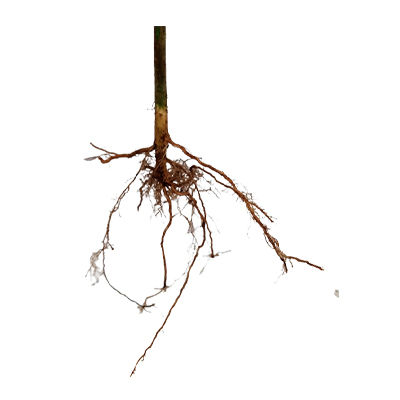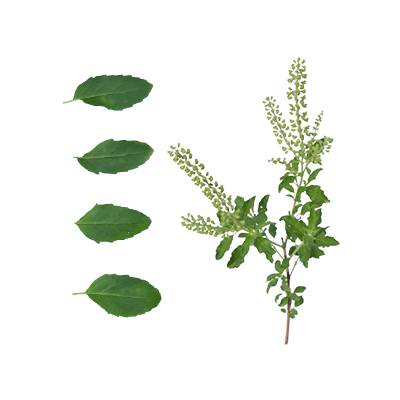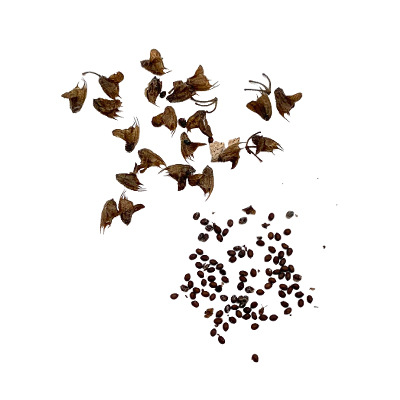Holy basil
Ocimum tenuiflorium L.
Lamiaceae
Location in our garden
Principal
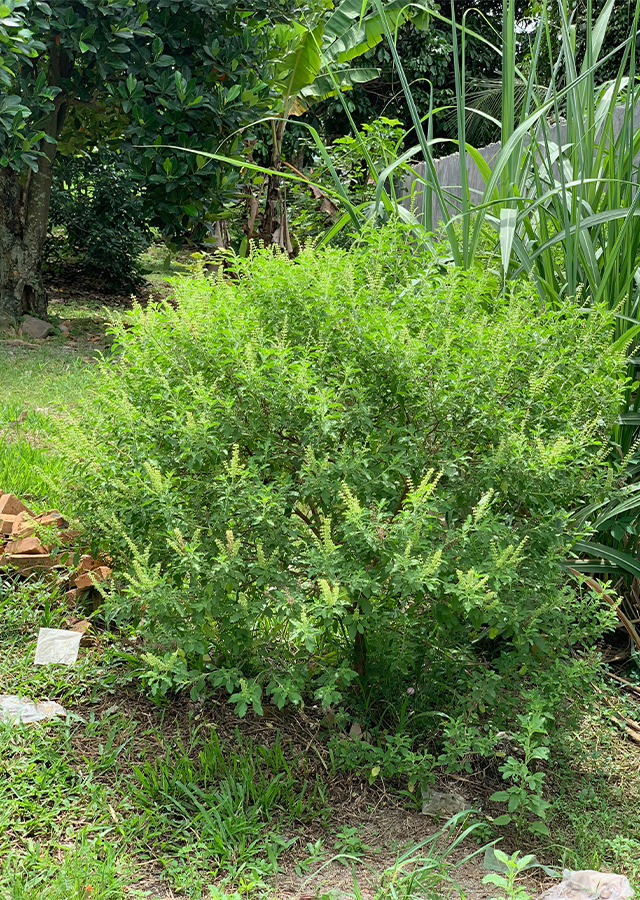
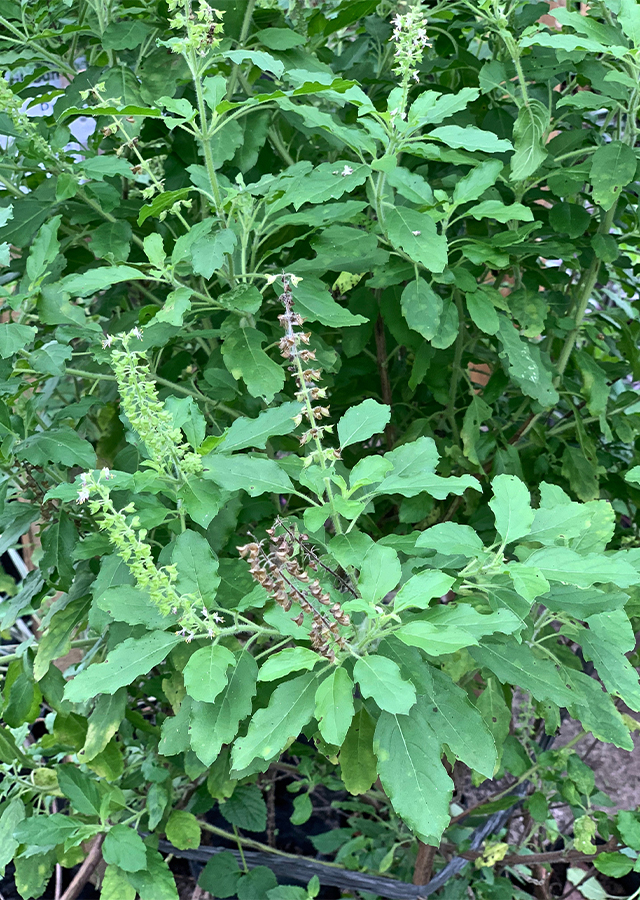
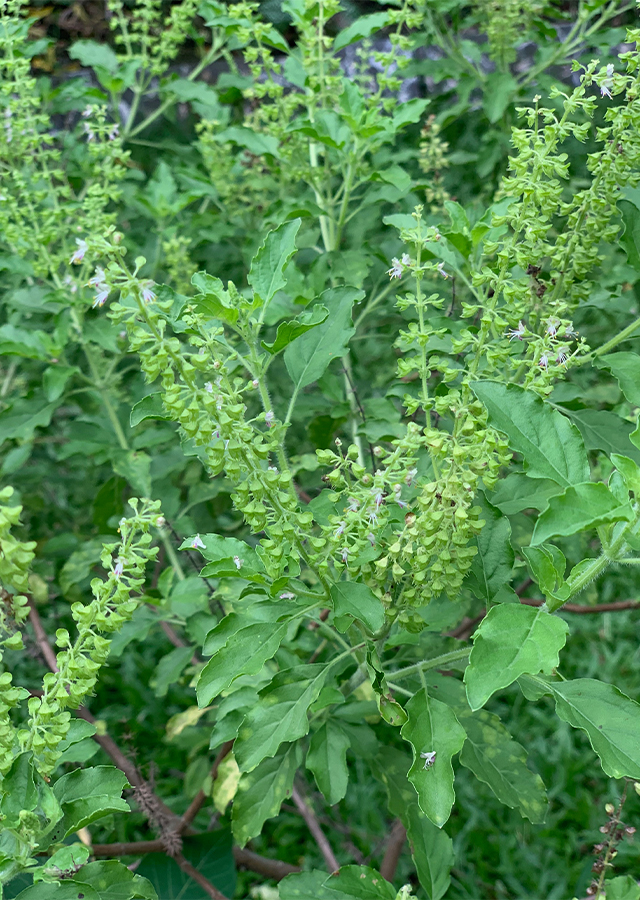
Synonym
Geniosporum tenuiflorum (L.) Merr.
Lumnitzera tenuiflora (L.) Spreng.
Moschosma tenuiflorum (L.) Heynh.
Habitus
Shrubs. An erect, much-branched perennial plant, herbaceous, growing from 30-100 cm tall.
Part Used
Leaves
Seeds
Roots
Growing Requirements
Full Sunshine
Habitat
Shrublands
Grassland
Overview
O. tenuiflorum is a herb primarily native to the tropical and subtropical Asia including the Himalayas, Malaysia, and other tropical and subtropical parts of Asia. One of the most sacred plants in India, where it has been cultivated for over three thousand years and is still widely grown around homes and temples for its protective influence.
Vernacular Names
Ruku-ruku (Indonesia), Oku (Malaysia), Loko-loko (Tagalog-Philippines), Kaphrao (Thailand), Hương nhu tía (Vietnamese), Saph'au (Laos), Mrèah prëu (Cambodian), Sheng luo le (Chinese), Tulsi (India).
Agroecology
A plant of the moist to wet, lowland tropics, where it is found at elevations up to 1,000 m. It grows best in areas where annual daytime temperatures are within the range 20-28 °C. Prefers a rich, light, well-drained to dry soil and a position in full sun. Naturalized in waste places or in settled areas and thickets.
Morphology
- Root - taproot.
- Stems - aromatic, 30-60(-100) cm tall with stem woody at base and an indumentum of patent hairs.
- Leaves - decussately opposite; petiole 0.5-2.5 cm long; blade blades elliptic to elliptic-oblon, 1.5-6 cm × 1-2.5 cm, margin remotely serrate, pubescent.
- Flowers - racemose, 8-10 cm long, consisting of opposite 3-flowered cymes appearing as verticils, lax; flowers 3 mm long, pink or white.
- Fruits - consisting of 4 nutlets, green to brown, surrounded by the persistent calyx on a spreading pedicel 3-4 mm long.
Cultivation
Propagated by its small and numerous seeds, and grows rapidly. It is not difficult to uproot, can grow more strongly after pruning and cause trouble to places where it is weedy.
Chemical Constituents
Essential oils, flavonoids, phenolic, eugenol, carotenoids, anthocyanins, phenylpropanoids, fatty acids (stearic, palmitic, oleic, linoleic, linolenic), limatrol, decyladehyde, cirsilineol, cirsimaritin, isothymusin, isothymonin, apigenin, and rosmarinic acid.
Traditional Medicinal Uses
- The plant is pungently aromatic, warming and antiseptic. It induces perspiration, lowers fevers, relaxes spasms, eases pain, clears bacterial infections, strengthens the immune and nervous systems, reduces inflammations, and benefits the digestive system.
- Research has shown that the herb has the ability to lower blood sugar levels.
- The essential oils from the leaf have shown antibacterial and antifungal activities.
- The plant is used internally in the treatment of feverish illnesses (especially in children), colds, influenza, sinusitis, headaches, rheumatism, arthritis, digestive disorders, including abdominal distension and cramps.
- The juice of the plants is used to treat insect bites and ringworm and dropped into the ear to treat earaches.
- The seeds are used as a tonic.
- The herb is used externally as an antiseptic to treat skin infections, spots etc.
- In Indonesia a decoction of the leaves is used to treat colds in children, to heal wounds and to promote lactation in women.
- In Philippines it is used against gonorrhoea and in Malaysia against rheumatism.
Part Used
Reference Sources
- Pingale, S.S. & Firke, Narayan & Markandeya, A.G.. (2012). Therapeutic activities of Ocimum tenuiflorum accounted in last decade: A review. J Pharm Res. 5. 2215-2220.
- Siemonsma, J.S.; Siemonsma, J.S.; de Guzman, C.C. (1999.). PLANTS resources of South-East Asia 13 : spices / editors, C.C. de Guzman and J.S. Siemonsma. Bogor : Prosea Foundation.
